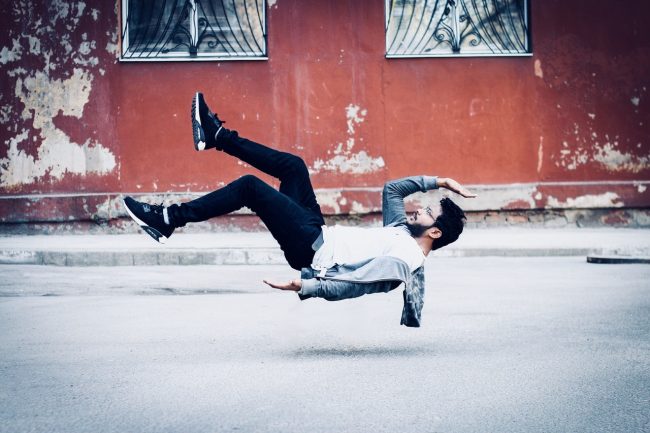Why Do We Dream? 9 Mind-Blowing Facts About Dreams
Dreams have fascinated us for centuries. There have been books written about them and countless stories and theories, with some people even claiming that “life is but a dream”, and that one day we might wake up to an even more real state of consciousness.
But Why Do We Dream and What Do Dreams Mean?
The study of dreams and their interpretation is called Oneirology.
But how do you measure a dream? How do you see other people’s dreams when people forget 95% of their dreams within the first 10 minutes after they wake up. That’s crazy!
But hey, some advancements have been made in the study of dreams, which we’re going to talk about in today’s video. Why do we dream? Here’s what we know so far.
1. Dreams may reflect our unconscious self
No laws of physics whatsoever apply to the world of dreams, but apparently, some patterns can be found.
In a recent study, researchers have Googled the word “dream” in almost every language and used the Google search data to see the most common dream topics around the world.
Apparently, in the UK, the most common dreams are about teeth falling out. In the US, Canada and Australia, the most common dreams concern snakes.
In South Korea, the most popular topics were related to falling into the water. Of course, these findings need to be taken with a pinch of salt, as they only rely on what the people searched on Google. However, dreams do have some relations with our reality and environment. You can notice that people from different parts of the world dream of a collection of images from their daily conscious lives.
According to Sigmund Freud’s theory of dreams, what we dream is influenced by our burning desires, longings, thoughts, and fears buried deep down into our unconscious minds.

2. We dream 2 hours every night
If you do the math, over the course of an 80-year life, we dream the equivalent of 10 years. However, we don’t remember most of these dreams. Research suggests we generally remember one dream a week. Apparently, women are more likely to remember a dream compared to men.
But 10 years of dreams? That’s quite a lot! Imagine if you could remember everything you ever dreamt of and wrote a book about it. That would be cool, right?
3. We do not only dream during REM sleep
So, we can’t talk about dreams without considering sleep. Scientists have identified 4 stages of sleep: transition from wakefulness, light sleep, deep sleep and REM sleep.
It’s traditionally thought that we only dream during REM sleep. But that’s a misconception. Initially, people associated the rapid eye movements during REM sleep with dreams. But that is not the case.
We also dream during non-REM sleep, but we experience the most vivid dreams during REM.
So, throughout a night of sleep, we frequently cycle between these 4 sleep stages. In just one night, people might experience up to 6 periods of REM sleep.
4. We’re not the only ones who dream
You’ve probably seen your cat or dog twitching, paddling or kicking their legs in their sleep. Animals dream, too. Heck, once, my cat woke up hissing at some invisible foe from her dream. That might have been an interesting dream to see.

5. Dreams help us process our emotions
Some of the most important dream theories found that dreams play an important role in consolidating our memory and helping us process emotions.
Dreams might serve as a way to express our deepest desires and longings or teach us how to confront our most profound fears and anxieties.
In one study, researchers would wake people up just as they were going into REM sleep. They found that those people who couldn’t get REM sleep were tense, had coordination and concentration problems, and even manifested a tendency to hallucinate. So, because during REM sleep we get most of our vivid dreams, we might conclude that there can be an association between dreaming and our cognitive and emotional well-being.

Some experts also claim that dreams can help us solve some of our life issues. You know there’s the famous saying “sleep on it”? Sometimes, we wake up from a dream with a great idea, like the guy who discovered DNA.
James Watson, the author of The Double Helix has revealed that his groundbreaking discovery came to him after he had dreamt of a spiral staircase that resembled the double helix image of the human DNA.
However, there are also those researchers who believe dreams have no benefits to our mental or emotional well-being, and that they have no purpose at all.
6. Do dreams have specific meanings?
In most cultures, dreams hold specific interpretations and spiritual meaning. Often when we dream something crazy, we wonder, “What might it mean?” We hold this belief that dreams got to mean something, right? This is where the line between dreams and visions gets blurry.
The Old Testament holds about a dozen of dream interpretations. In the Book of Genesis, Joseph, the son of Jacob, had the ability to tell the future based on dreams. He interpreted Pharaoh’s dream at that time and foretold a 7-year famine.
The Ancient Egyptian Book of Dreams is a fascinating 3,000-year-old papyrus full of dream interpretations. About 108 dreams, together with 78 activities and emotions, are divided into two categories: good and bad. The bad ones are written in red, the color of bad omens.
So, do dreams hold hidden messages that we can decode? Did you ever happen to dream of something that would really happen?
7. Our brain is highly active during dreams
Back in the 1950s, researchers started to use electroencephalography (EEG) to examine our brain’s electrical activity during sleep while also watching the movements of the eyes and limbs.
They found that during sleep, our brain passes through a series of sleep stages.
During the first stage, muscles relax, our breathing and heartbeat slow down and body temperature drops. Our brain waves also begin to calm down.
After a few minutes, we enter the light sleep stage, where our heartbeat, breathing and muscles relax even further. Brain wave activity is also slow, except for brief bursts of electrical activity. Stage 2 of sleep, aka light sleep, is usually how we spend most of our nights.
The third stage of sleep is the deep sleep phase. Did you ever wake up from a good night’s sleep feeling tired? That might be because you didn’t get enough sleep. We need deep sleep to feel refreshed in the morning. This is the sleep phase when it is the most difficult to awaken you. In deep sleep, brain activity is also at its lowest.
Then comes REM sleep, approximately 90 minutes after falling asleep. During REM sleep, our eyes move crazily fast behind our closed eyelids. Our brain activity comes closer to waking levels. During REM, we have the most vivid dreams. But as we mentioned earlier, dreams also occur during non-REM sleep.
Another interesting thing that happens during REM sleep is that our muscles become temporarily paralyzed to prevent us from acting out our dreams. So, you might dream of sword fighting or climbing mountains, but your body doesn’t move.
However, people who suffer from rapid eye movement sleep behavior disorder (RBD) might enact their dreams because they lack REM skeletal muscle atonia. This means their muscles are not blocked during REM sleep and might even start walking in their sleep. That sounds a bit dangerous, doesn’t it?
On the flip side, you might wake up and feel stuck, like you can’t move. This can also occur because of the same atonia or sleep paralysis that prevents our bodies from enacting our dreams during sleep. These episodes of sleep paralysis can also involve hallucinations like you’re between the space of waking and sleeping. It’s a very weird sensation.
Anyways, the first REM cycle usually lasts up to 15 minutes. Then the brain wave activity takes a plunge, only to pick up the pace again in the next REM cycle.
8. You can know you are dreaming
Did it ever happen that you were dreaming and suddenly realized that you were dreaming? You just knew you were inside a dream, and none of it was real. It happened to me.
It’s called lucid dreaming, and it’s pretty interesting. In a lucid dream, you can actually make conscious decisions. I, for example, was having a nightmare when I realized it was just a dream, and I decided to wake up. And I woke up.
But lucid dreaming can get even more complex than that. Remember the movie Inception? Remember how the dream artisans were able to control the shape and content of their dreams and the dreams of others? That was so cool!

Well, if you have a lucid dream, it’s like waking up inside a dream and making conscious decisions about what should happen in that dream. Awesome, right?
9. We practise our fight& flight instincts in our dreams
Most of the time, we experience dreams in which we run or fight with odd monsters in life-threatening and dangerous situations.
The primitive instinct rehearsal theory claims that what happens in dreams can help us practise for real-life situations. For example, if you dream you are faced with a big bad wolf and have to survive, it means you are practising your fight or flight instincts.
What do you think? Did any of your ninja-fighting dreams help you learn karate?
